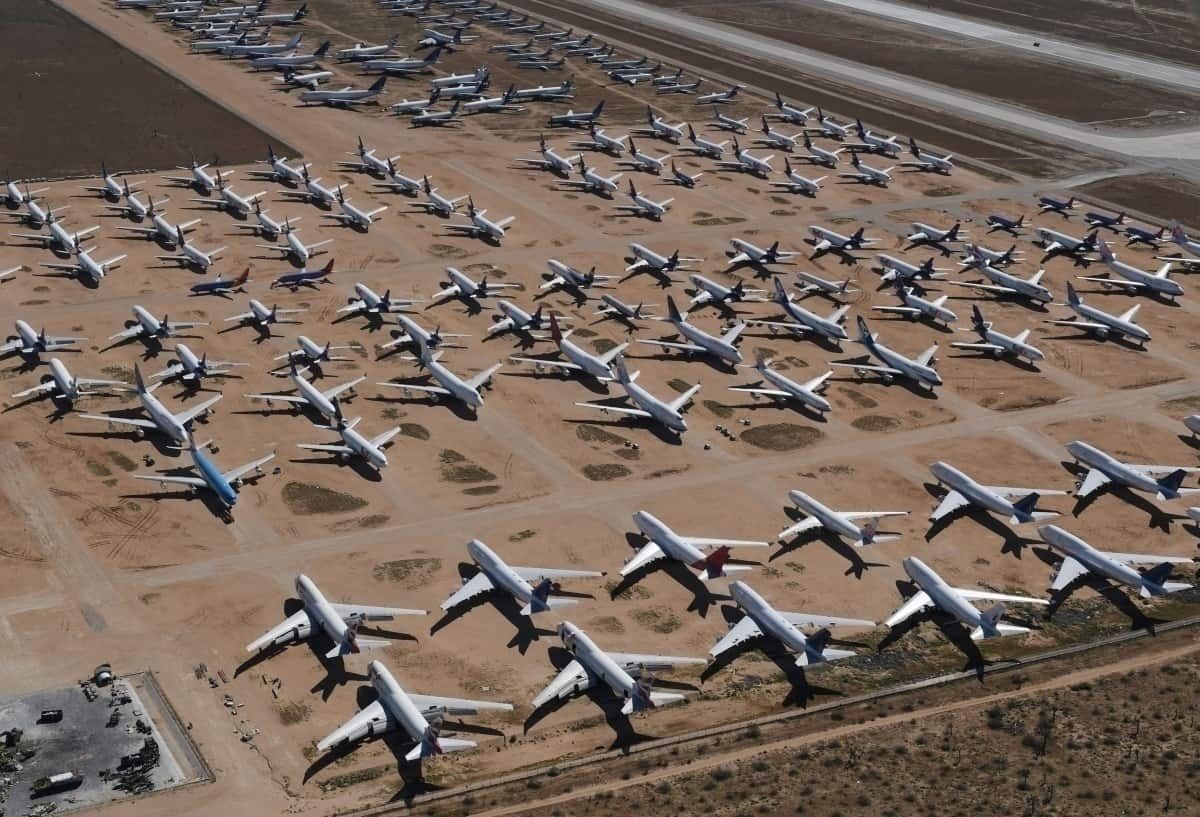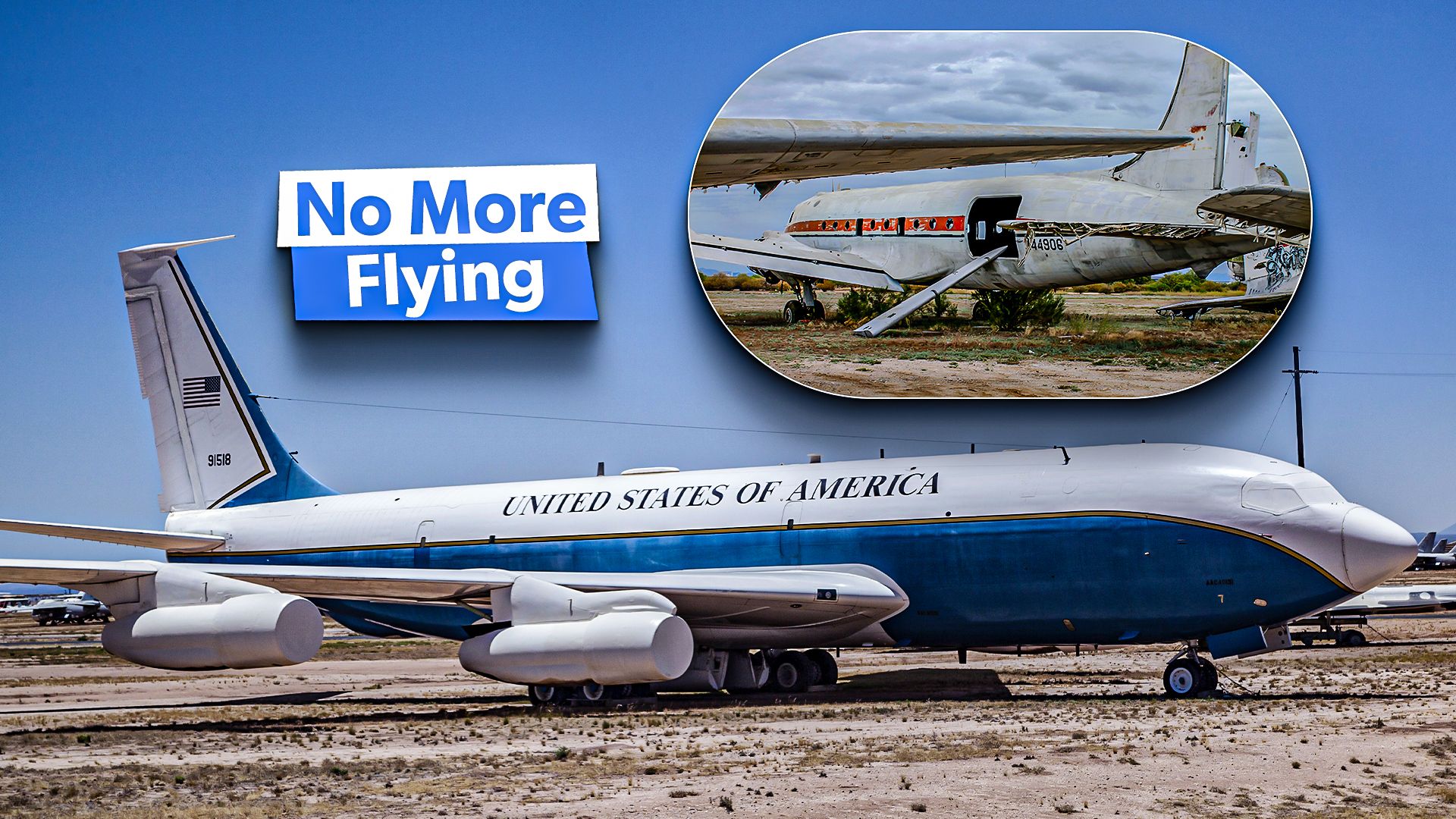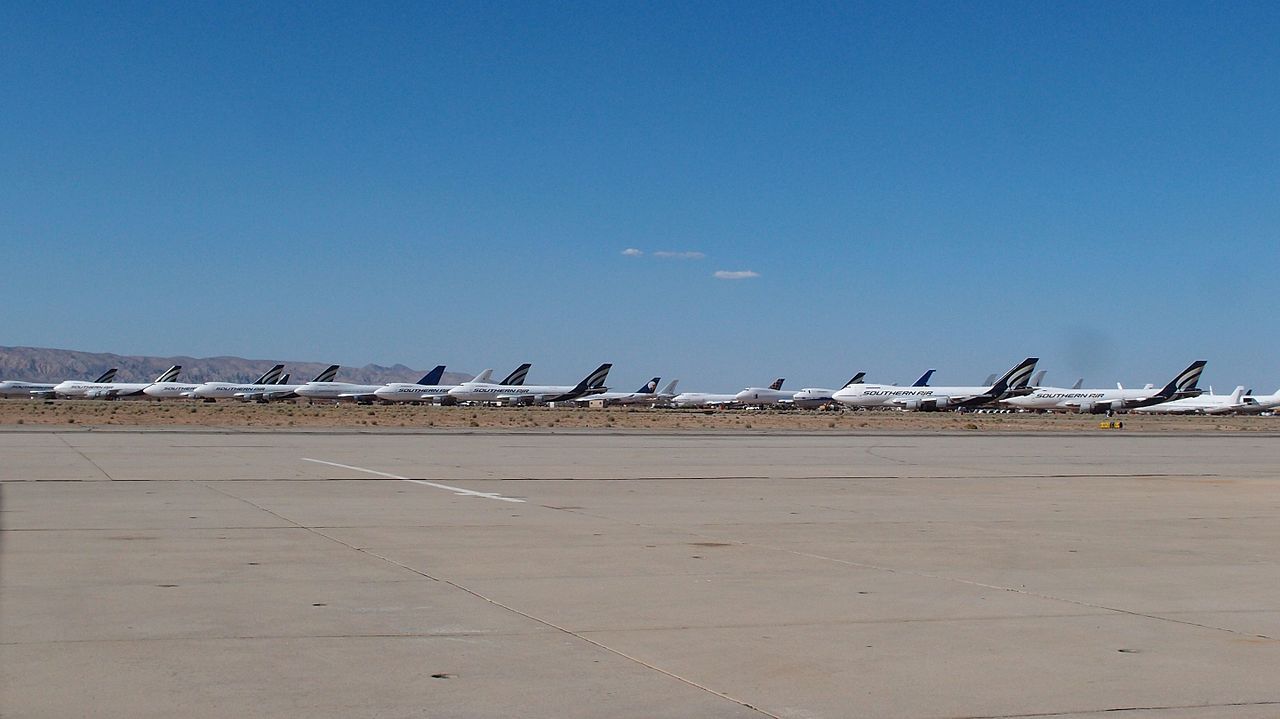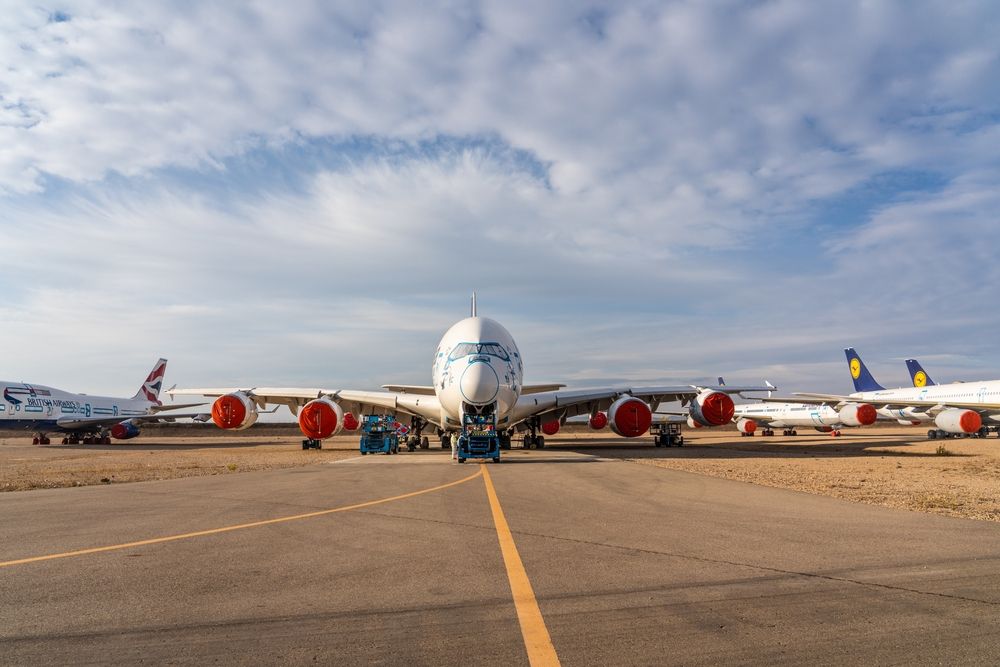Summary
- Aircraft boneyards store retired planes for safe dismantling & part salvage in dry desert conditions.
- Major US boneyards include Mojave Air & Space Port, Davis-Monthan AFB, and Tucson’s AMARG.
- Boneyards aided airlines during the pandemic by storing grounded aircraft, easing financial strains.
When an aircraft reaches the end of its operational life, it often finds its final resting place in an aircraft boneyard. These vast storage and disposal facilities, located primarily in dry, low-humidity desert regions, play a critical role in the aviation industry.
Why boneyards exist
The lifecycle of an aircraft, from its initial design and manufacture to its years of service, culminates in a well-organized end-of-life process. This involves several key stages, starting with this: once an aircraft is retired from service, it undergoes a decommissioning process where hazardous materials are removed, and the aircraft is made safe for storage or dismantling.
Aircraft that may be reactivated (like during the COVID-19 pandemic – more on this later) or sold for parts are stored in boneyards. These facilities are often located in deserts, where the air is dry and low in humidity, to minimize corrosion and other forms of deterioration.

Related
What Are The World’s Largest Aircraft Graveyards?
For aircraft that will not return to service, dismantling begins. This involves stripping valuable parts, engines, and avionics, which can be refurbished and sold. The remaining airframe is often broken down and recycled. Modern aircraft are designed with recycling in mind: according to KPMG, nearly 80% of an aircraft’s components – and over 90% of its weight – can be reused or recycled.
Main aircraft boneyards in the US
A majority of the world’s main boneyards are found in the US, serving as the final (or temporary) resting place for aircraft from all over the world. For example, when Qantas retired its last Boeing 747 in 2020, it was sent from Sydney to the Mojave Desert in California, as reported by CNBC.
Situated in the Mojave Desert, the Mojave Air & Space Port is a unique boneyard known for its role in both the aviation and space industries. It is a hub for commercial aircraft storage and spaceflight activities.
The arid climate and vast open space of the Mojave Desert provide optimal conditions for aircraft preservation. In addition to aircraft storage, the facility hosts flight testing, space industry development, and heavy maintenance. As written on the Mojave Airport website, more than 60 aviation and aerospace companies call the Air & Space Port home.

Related
Video: Delta & Southwest Planes Piling Up At Boneyard
According to Airplane Boneyards, other major facilities in the US include:
- Pinal County Airpark, Arizona
- Phoenix Goodyear Airport, Arizona
- Davis-Monthan Air Force Boneyard, Arizona
- Kingman Army Air Force Boneyard, Arizona
- Southern California Logistics Airport, California
- San Bernadino, California
- Roswell International Air Center, New Mexico
The world’s largest aircraft boneyard
This article would not be complete without mentioning the world’s largest aircraft boneyard, which is also in the US. Located in Tucson, Arizona, Davis-Monthan Air Force Base is the most well-known aircraft boneyard globally.
This facility, managed by the 309th Aerospace Maintenance and Regeneration Group (AMARG), spans over 2,600 acres (1,052 hectares) and houses close to 4,000 aircraft and 13 aerospace vehicles, per Interesting Engineering.

Related
5 Amazing War Planes At The Largest Aircraft Boneyard In The World
With almost 3,200 aircraft, including over 1,000 fighter jets, The Boneyard is home to an impressive array of retired military aircraft.
While a diverse range of aircraft can be found at Davis-Monthan Air Force Base, most of the aircraft parked here are from the military. The bulk of the boneyard’s residents – from cargo lifters to heavy bombers – once flew for the United States Air Force, Army, Coast Guard, Navy, Marine Corps or National Aeronautics and Space Administration (NASA).
Significance of boneyards during the pandemic
The COVID-19 pandemic had a profound impact on the aviation industry. With global travel restrictions and a dramatic drop in passenger numbers, airlines were forced to ground large portions of their fleets. Boneyards played a crucial role during this period – you might recall seeing videos and photos of fleets of aircraft sitting idle on an expanse of arid land. It was at this unprecedented time that aircraft boneyards served a number of purposes.
These facilities provided the necessary space and conditions to preserve aircraft as many airlines opted to store aircraft temporarily, hoping for a swift recovery in travel demand. Moreover, the pandemic accelerated fleet restructuring plans. Airlines retired older, less fuel-efficient aircraft earlier than planned, leading to an influx of planes into boneyards.
Boneyards also offered a level of economic relief to airlines and operators, per the BBC. By storing rather than scrapping aircraft immediately, airlines could alleviate financial pressures, maintaining the option to reintroduce planes into service as demand recovered.
Conclusion
Aircraft boneyards are an integral part of the aviation industry’s lifecycle management. They provide essential services for decommissioning, storing, and recycling aircraft. The significance of boneyards was particularly highlighted during the COVID-19 pandemic, as they offered critical support for airlines dealing with grounded fleets and accelerated retirements.
Photo: Mario Hagen | Shutterstock
These facilities offer unique advantages, from ideal preservation conditions to comprehensive Maintenance, Repair, and Overhaul (MRO) services. And as the aviation industry continues to evolve, boneyards will remain vital, ensuring that aircraft are managed efficiently and sustainably throughout their lifecycle.




